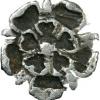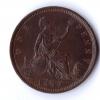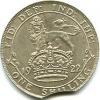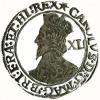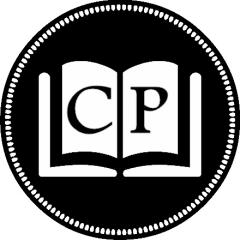Leaderboard
Popular Content
Showing content with the highest reputation on 12/22/2015 in Posts
-
Agreed, all my new purchases get a degrease with an acetone soaked cotton bud1 point
-
I'm with Coinery on this one, I dont consider removing detrimental surface contaminants (salts, greases, wax, oils) 'cleaning' in the perjorative numismatic sense of the word, but rather preventative conservation; the surface structure and composition of the coin itself is not altered , rather future damage from acids and salts is prevented. Dealing with copper alloys this is otherwise a very real risk long term. I suspect the break-down of organic deposits including skin oils and the chloride and acid salts released within to be the main cause of verdigris, aggravated by atmospheric moisture. Jerry1 point
-
There are a few books which are helpful for identification, but the quid pro quo is their weight which iincreases in line with the complexity of the subject. Brussels hoard, Mass sylloge, or any one of the numerous BNJ articles on restricted sections, one way or another you are going to have to carry around a volume or two if you want to identify the variants within the main classes. TBH Spink isn't that bad given you are probably going to have it with you for other references. Anyway, a parcel of 100 should ensure you are fully up to speed on a few classes, which means that you will know what not to buy. Just as important as looking for specifics, is knowing what you have and avoiding them too.1 point
-
1 point
-
Edit to add: "In the interim ... Long live the use of Acetone in the U.K. ... hey ... its cheap but the real question is can it get past a grading service as never being cleaned or a Spinks cataloger .... for that matter." I'm dumbstruck, of course acetone will get past the TPGCs! Nothing happens, except the coin is decontaminated! What's wrong with everyone, it's not cleaned, acetone cannot clean, only remove grime that may one day attack the coin! Here's my two-penneth, if all perfect coins were decontaminated by acetone, we'd never see a fingerprint upon them ever again. If you get a 100 year old bronze coin in dazzling BU, how long before a 21C careless print makes its appearance? How much do you think the previous seller or auction house cared about handling pre delivery to you? Your prized BU penny from an auction house has just been handled more than a 2010 currency 10p of Elizabeth! It's a shame, but a fact. I think it should be a routine thing that we decontaminate a coin before filing it into our own collections! I do, and always will! All 8 coins from my own collection are sat void of acidic human grease!1 point
-
Forum software update? Hold on to your hats chaps! (Or any other things you value!)1 point
-
Here's something from Michael Freeman: I was lucky enough to be alive when Victorian pennies and halfpennies were in circulation, and in 1946, at the age of 6, encouraged by my teacher, I started collecting them. All and every one - even those with illegible dates! The first thing I noticed was that there were both a young-looking and an old-looking head on pennies of 1874. This made me want to find out when other changes occurred, and sometimes I noted that 2 or more types occurred in the same year, 1881 being a good example. With no book available on the subject, I learnt more and more simply from collecting them, and the next fact which I remember learning was that 1 in every 12 pennies in circulation was Victorian. This was around 1950. In the 1950s, at school, I used to play at guessing the date of any penny by looking only at the obverse. I could tell either exactly or within 2-3 years, from subtle differences, such as in colour, caused by variations in the alloy, by the rim height, and very minor flaws which appeared in certain periods - such as the mis-strike of the upper leaf of the garland on pennies of obverse 6 in 1873. On Bun pennies, the silhouette, or only part of it, can indicate exactly what obverse or reverse it is - such as on the many early 1860s pennies. By the time they were withdrawn in 1966, I had over 3,000 halfpennies and 62,000 pennies , with the Veiled Bust pennies of 1895-1901 running into a few thousand each date. I had discovered 27 major types not in Peck's book on Copper Tin and Bronze, which was published in 1964. In the Introduction to 'The Bronze Coinage of Great Britain', I wrote how difficult it was for me to decide what to catalogue as a type and what not to. An example was the 1874 obverse 7 with a distinctly hooked nose found only paired with one of the reverses, which one I forget now. I rejected it as too confusing. Reverse I (1874 only) was a toss-up which I opted to include even though it does resemble reverse J. I decided that the Victorian series was complicated enough without sub-dividing it into all the minor touched-up dies. The 1922 penny with an early version of reverse C was a case in point. Even by the 1980s, few people cared, so It was simpler for people to know it simply as a variant of reverse C, which it is. Nowadays things are different. Many minor and a few major omissions from my book are now known to lots of collectors, and, for them, this is an entirely separate reverse. The 1926 penny with Heritage, with reverse C has the proper adopted reverse used from 1927 to 1936. It is either a proof or first striking, with all details bold, struck from new dies of both sides. The letters 'ONE PENNY' are in high relief and double-struck (indicative of proof strikings), which can be seen best in the hand, although Heritage's excellent photos show this quite well. 1927 pennies have much softer details on both sides, as expected from dies which had to be used on millions of blanks. The 1922 penny with reverse C (variant) was quite a surprise when first discovered - after all, all known1926 pennies had reverse B, and reverse C first appeared only in 1927. The 1926 penny with this reverse, on the other hand, was perfectly likely, being the year prior to its use in full production. Moreover, the halfpenny and farthing of 1926 both have a reduced version of it. Logic strongly suggests there must have been a reverse die prepared for the penny, as well; and this coin is evidence that it was. My view is that the intended new reverse was designed and tested in 1922, then shelved until 1924 or 1925, when the die was refined to what became reverse C, but not used until 1926 when this coin, with a '6' punched over a partially-erased 4 or 5, was struck as a trial piece. Found to be satisfactory, but not used for production until 1927. As for the date numerals, first note the tiny dot above the '6', which does not appear on any other penny. Similar dots are known to have been used as a guide to where a character should be punched on a die. There is a faint trace of an exergual line lower than the intended base of the design. This could indicate a die alteration from the level it had been on reverse B. This coin had been examined under high magnification and no sign of a numeral '7' was found. (Modified Effigy, obverse 4 + reverse C, + modified reverse, pennies were struck for circulation only dated '1927'). Everyone can see the '6' has traces of other numerals, which have been partially erased. But on the DIE, not the coin. To resolve doubts, knowing the latest technology would be applied to examining it, I submitted the coin to Heritage, who had it at both NGC and PCGS before cataloguing it. All three institutions are experts and confirm what I concluded. Below is the full text of the description I sent Heritage, but which they did not use. I write too much! *1926 penny, OBV.4 + REV.C - the Modified bust AND Modified reverse. UNIQUE. S. 4054A. Ex M.J. Freeman. After many years of striking pennies which had ghosting (A faint unintentional impression of the king's head showing through on the reverse around Britannia), the Royal Mint found the solution. The high relief of the head had caused 'suction' of metal from the reverse, so, in 1922, a new reverse was re-engraved. A few specimens were struck that year, and circulated. These still bore the old obverse; but there is also a so-far unique penny of 1922 with a completely re-engraved OBVERSE, in low relief, paired with the new reverse. Both seem then to have been shelved for 3 years. No penny was struck in 1923, 1924, or 1925. The halfpenny and farthing were struck during these years, and in 1925 coins with both the old style and the new, modified, dies are found; but it was not until 1926, when penny striking resumed, that the new, modified head, was introduced on this denomination. Both the high relief (Freeman obverse 3) and the low relief obverse 4 - usually referred to as the 'Modified Effigy' - occur for 1926, although the latter is much the scarcer. On 1926 pennies, both types of obverse are paired with the same, earlier-style, reverse - B - with the exception of THIS coin. The 1922 modified reverse has been revised in slight detail, with Britannia's head a little larger. This reverse - C - remained, unaltered, on all pennies from 1927 until the end of the reign in 1936. From 1928, the modified effigy was significantly reduced in size, so the original, larger, modified effigy is found only on a small number of 1926, and ALL of 1927. On this coin there are traces of another numeral inside the '6'; but 1927 was the ONLY year known to have obverse 4 + reverse C, and it is definitely not a '7'; so the alteration was to the DIE, not the coin. This conclusion is reinforced by traces of an exergual line below the level found on reverse C, in fact where it used to occur on reverse B. My guess is that the reverse was engraved with the date '1925' but, as it was not used until this coin was struck, the '5' was overstruck with a '6'. The same '6' punch appeared on a reverse B 1926 Modified Effigy in another Heritage auction earlier this year (2015). SEE http://coins.ha.com/itm/great-britain/great-britain-george-v-penny-1926-ms65-red-and-brown-ngc-/a/3037-29783.s?ic4=OtherResults-SampleItem-071515 The designs on both sides are far sharper than usually found for these dies, and the reverse letters are double-struck, a feature which occurs on proofs and trial strikes although the surfaces are not prooflike. It is clearly a first strike for both the dies. The coin appears to have been dipped in 'hypo', which gives it its dark color, and some other pennies of later years had the same treatment before release into circulation. There are, however, small areas which are bright. The coin is about uncirculated, but has a small spot of verdigris on the lettering on the top of the obverse. It may well have had other areas where this was removed, along with the surface; hence the bright patches. An important link in British bronze. (Michael Freeman) I used to receive a lot of emails, but do not want to devote my waking moments to answering them, as I could do; hence my not wanting my email publicised. I am really pleased that lots of people share my former enthusiasm, but don't want to discuss coins. I read what was written, and, as I had previously been in touch with Chris who asked me about possibly producing a soft-back, or electronic edition of 'The Bronze Coinage of Great Britain, when I did this, I asked him to reply for me in the Forum. There is nothing sinister, as some comments suggest. I am selling my house and buying another 500 miles away. It is time-consuming and my health is not the best. I have taken up a lot of time in replying to try to clarify issues raised in the Forum, and hope goodwill will prevail! I can do no more. My thanks to Chris, who runs it excellently.1 point
